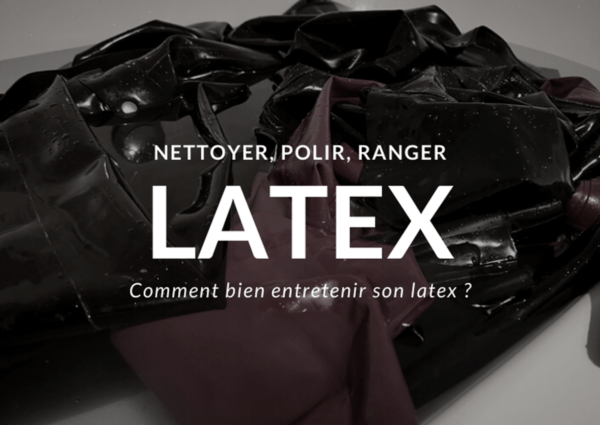An ionic bond is always formed between a metal and a non-metal. Is Robert Pickton Still Alive 2021, A Computer Science portal for geeks. Recap, we have learnt 2 types of bonds exist between compounds Covalent Bonds - Electrons are shared Ionic Bonds - Electrons are Transferred - Balancing char SlideShare uses cookies to improve functionality and performance, and to provide you with relevant advertising. y(t)=Ct+2tt. mettalic 6826 tb/sn: 33 micron non-leafing aluminum paste. Show that the general solution of the equation can be written in the form. Is it possible for a molecule to lose all of it's electrons? Question: H3C 'N -N N N CH3 What type of compound do you think caffeine is? A covalent bond is formed when atoms share valence electrons. From an environmental standpoint, caffeine isn't much of a . What ions will caffeine bond with? Created by Sal Khan. Substances that consist of large molecules, or a mixture of molecules whose movements are more restricted, often form amorphous solids. Solubilities of Ionic Substances in Liquids. What type of compound do you think caffeine is? Glass Covalent g. HCl covalent b. Graphite in pencil lead covalent h. (NH 4) 2 SO 4 ionic c. Aluminum metallic i. HC 2 H 3 O 2 covalent d. Copper metallic j. metallic. Department of Chemistry M.Sc. Nacl[Table salt] is the best example of ionic compounds. Categories . Unlike covalent bonds, in which electron pairs are shared between atoms, an ionic bond is formed when two oppositely charged ions attract one another. The LibreTexts libraries arePowered by NICE CXone Expertand are supported by the Department of Education Open Textbook Pilot Project, the UC Davis Office of the Provost, the UC Davis Library, the California State University Affordable Learning Solutions Program, and Merlot. Examples of Molecular CompoundsExamples of different types of Molecular Compounds are: H2O (Hydrogen and Oxygen elements - Water), CH4 (Carbon and Hydrogen elements - Methane). Ck3 Culture List, In addition, Sulfur is in group 6 and it needs two more electrons to achieve a noble gas state of Argon. 7th - 10th grade . Apply naming conventions to ionic compounds and oxyanions. Molecules are defined as two or more atoms connected by. Published editions Release year Title Publisher ISBN 2005 Recommendations 2005 (Red Book) RSC Publishing -85404-438-8 2001 Recommendations 2000 (Red Book II) In summary, this work demonstrates an empirical relationship between the presence of different electrolytes and caffeine degradation rates. Metallic crystals consist of metal cations surrounded by a "sea" of mobile valence electrons. The optical . The overall shape of the molecule is a pyramid with nitrogen at the vertex and a triangular base formed by the three hydrogen atoms. However, if an atom gains or loses electrons, the balance between protons and electrons is upset, and the atom becomes an iona species with a net charge. So this is the group one or group two on our periodic table of elements, and in the reaction Its oxidation state will be -1. An ionic bond is formed when one atom accepts or donates one or more of its valence electrons to another atom. However, these activitiesand the miracle of electricity itselfwould not be possible without that copper wire! As a society, we sometimes take things for granted. Absolutely, and hydrogen often makes a hydrogen ion (H+) which consists of only a proton. EXAMPLE SODIUM CHLORIDE 8/21/2009 Step 1: Form cation Na Na+ + 1e- Step 2: Form anion Cl + 1e- Cl- Step 3: Write chemical symbols for cation and anion Na 1+ + Cl1- Step 4: Cross charges of anion and cation Na Cl 123. But maybe what matters for boiling is different than for melting, do you know how these bonds translate into the properties you cited ? The properties of a solid can usually be predicted from the valence and bonding preferences of its constituent atoms. (adsbygoogle = window.adsbygoogle || []).push({}); Useful facts and info for all chemistry students. These pharmaceutical compounds were discovered in all sources of water including ground water, surface water, and drinking water (Khan et al., 2017). Much of the study of chemistry, however, involves looking at what happens when atoms combine with other atoms to form compounds. Based on the melting points of both substances, in comparison with the table, what's your guess? 1) Shared equally by two atoms. 1a also explain all the bond lengths. y(t)=tCt+2t.y(t)=\frac{\sqrt{t}}{C \sqrt{t+2}-\sqrt{t}} . However, the bond between calcium and the C X 2 X 2 fragment is ionic. Given the chemical reaction: 2H2O2(aq)2H2O(l)+O2(g)2 \ \text{H}_2\text{O}_{2(aq)} \rightarrow 2 \ \text{H}_2\text{O}_{(l)} + \text{O}_{2(g)}2H2O2(aq)2H2O(l)+O2(g). Updates? In a nonpolar covalent bond, electrons are. 5. It is also slightly acidic in water, though the compound itself tastes bitter. The lattice is formed because the ions attract each other and form a. Question 26. The smallest repeating unit of an ionic compound. The strong electrostatic attraction between adjacent cations and anions is known as an ionic bond. Chemical Composition of Caffeine. In which type of bond are electrons pooled together and shared by many atoms? Ba (CN) 2 - barium cyanide. Types of Compounds - Categories - Ionic, Molecular and AcidsMost types of compounds fall in to one of three categories called ionic compounds, molecular compounds, or acids. Tcs International Rates Per Kg In Pakistan, A space-filling model and a ball-and-stick model of ammonia. The gears at BBB and CCC drive machinery requiring power equal to 50kW50 \mathrm{~kW}50kW and 25kW25 \mathrm{~kW}25kW, respectively. Caffeine is a major pharmacologically active compound in coffee and it is a mild central nervous system stimulant 2,3. Ionic crystals are hard and brittle and have high melting points. Direct link to Christine Yan's post Does the bond really exis, Posted 7 years ago. Metallic Bonding A metallic bond is type of chemical bond formed between positively charged atoms in which the free electrons are shared among a lattice of cations. trina daughter instagram 97887 65581; music city drum corps staff saiservicecentre2020@gmail.com Step 1: Identify the given type of solid. Are usually soluble in water. Metal + Non-Metal = Ionic compound. These electrons, also referred to as delocalized electrons, do not belong to any one atom, but are capable of moving through the entire crystal. 1) Shared unequally by two atoms. Choline Deficiency Symptoms, Looking at the table, which rule concerning melting behavior can you formulate? Why can we measure the electric conductivity in our experiment for KCl and Substance 2? Generally, ionic crystals form from a combination of Group 1 or 2 metals and Group 16 or 17 nonmetals or nonmetallic polyatomic ions. Ionic compounds typically have a higher melting point than covalent compounds. y(t)=t(1+A3A)t+2t.y(t)=\frac{\sqrt{t}}{\left(\frac{1+A}{\sqrt{3} A}\right) \sqrt{t+2}-\sqrt{t}} . Hydrogen-bonded solids, such as ice, make up another category that is important in a few crystals. Compounds that do not contain ions, but instead consist of atoms bonded tightly . Ionic bonds are the strongest type of chemical bond, followed by covalent bonds and then metallic bonds. The bond between the two carbon atoms is covalent. Properties and several examples of each type are listed in the following table and are described in the table below. Remember that the point in doing problems like this is to gain skill in manipulating complex expressions, so a good study method is to do the problems by hand and use a computer to check your answers. Some molecular crystals, such as ice, have molecules held together by hydrogen bonds. 0. b. The lab also allows students to determine the solubility of ionic compounds and molecular compounds in both polar and non-polar solvents. Corrections? It is very soluble in hot water; upon cooling, the solution deposits crystals of caffeine monohydrate. Metallic bonds are seen in pure metals and alloys and some metalloids. [Why are the hydrogen atoms in ammonia pushed downward into a tripod shape? Ionic bonds are formed when an electron moves from one atom to another, and covalent bonds are formed when two different atoms share one or more pair of electrons. Direct link to Eliane Leal's post Elements tend to try and , Posted 4 years ago. For example, when potassium donates its one valence electron to iodine then it results in the formation of potassium iodide compound. * (phosphoric diester hydrolase) inhibitor, an adenosine receptor antagonist, an EC 2.7.11.1 (non-specific serine/threonine protein kinase) inhibitor, a ryanodine . (A cation is a positively charged ion; an anion is a negatively charged ion.) 7th - 10th grade . Chemical formulas, sometimes also called molecular formulas, are the simplest way of representing molecules. This agrees with our prediction. Compounds can be classified as ionic or covalent. Ion-dipole bonds (ionic species to covalent molecules) are formed between ions and polar molecules. The advantage of this type of model is that we get to see the covalent bonds, which also allows us to more easily see the geometry of the molecule. Atoms are the smallest units of matter that still retain the fundamental chemical properties of an element. Substance 1 is a covalent compound and Substance 2 is an ionic compound. Iron Compounds Ferrous Compounds Iron Ferric Compounds Iron Chelating Agents Iron-Dextran Complex Iron Isotopes Glucaric Acid Transferrin Ferritins Iron, Dietary Iron Radioisotopes Sulfur Compounds Sulfhydryl Compounds Volatile Organic Compounds Phenols Plant Extracts Iron Regulatory Protein 1 Hydrogen Peroxide Deferoxamine Biphenyl Compounds . A compound is a distinct group of atoms held together by chemical bonds. Try to visualize each complex number, using sketches as in the examples if necessary. Caffeine is a trimethylxanthine in which the three methyl groups are located at positions 1, 3, and 7. caffeine, nitrogenous organic compound of the alkaloid group, substances that have marked physiological effects. A solid steel shaft ABCA B CABC with diameter d=40mmd=40 \mathrm{~mm}d=40mm is driven at AAA by a motor that transmits 75kW75 \mathrm{~kW}75kW to the shaft at 15Hz15 \mathrm{~Hz}15Hz. Low conductivity. Caffeine has a stimulating effect on the central nervous system, heart, blood vessels, and kidneys. A covalent bond is formed when two atoms share electron pairs. A single, neutral hydrogen atom is shown on the left; a molecule of hydrogen, H2, is shown on the right. -Known as glycolysis, this pathway is ideal for endurance-type exercises, where glycogen stores are slowly and steadily depleted to provide a consistent rate of ATP production.-This pathway typically utilizes creatine phosphate supplies to provide short Chemical formula. Two kind of bonds are at work in water: The one oxygen atom and two hydrogen atoms in each H2O molecule are bonded with covalent bonds. Hydrogen for example? white spirits and naptha solvent. Amorphous solids may be soft and rubbery when they are formed by long molecules, tangled together and held by intermolecular forces. Olmsted and Williams' Fourth Edition of Chemistry focuses on helping you see and think about the world (and even your coffee) as a chemist. Q. 3. It contains well written, well thought and well explained computer science and programming articles, quizzes and practice/competitive programming/company interview Questions. Types of Ionic CompoundsExamples of different types of Ionic Compounds are: Types of Compounds - What is the difference between a compound and a molecule?Molecular compound. They are the bonds formed within one compound or . It will not bondwith covalent bonds There are 3 types of intramolecular bonds: covalent, ionic, and metallic. I remenber seeing in another video that intermolecular h-bonds typically make for high boiling points, like in water, because it takes alot of energy to break them apart. Pure caffeine (trimethylxanthine) occurs as a white powder or as silky needles, which melt at 238 C (460 F); it sublimes at 178 C (352 F) at atmospheric pressure. Covalent bonds form between two metals. Omissions? Asked for: classification and order of melting points. Types of Compounds Ionic = Metal + Nonmetal Covalent = 2 Nometals or Metalloid & Nonmetal . Caffeine is the principal active compound in coffee, but other compounds are also present which can make it difficult to differentiate effects of caffeine per se from other Type II Ionic Compound. Propane and formaldehyde are both molecules. Feel safe whenever you are placing an order with us. The caffeine content of tea varies greatly depending on the strength of the tea, but it averages about 40 mg. GeO2 (melting point 115 degrees Celsius) Expert Answer. Non-Metal + Non-Metal = Covalent compound. Caffeine is the principal active compound in coffee, but other compounds are also present which can make it difficult to differentiate effects of caffeine per se from other Caffeine occurs in tea, coffee, guarana, mat, kola nuts, and cacao. Direct link to EnchantressQueen's post It makes sense for proton, Posted 7 years ago. Ionic, covalent and metallic bonds are all different types of chemical bonds. The left-hand image shows the space-filling model for ammonia. Types of Compounds Ionic = Metal + Nonmetal Covalent = 2 Nometals or Metalloid & Nonmetal . Most specifically, scientists typically recognize six main types of solids, each characterized by specific properties and structures. The intermolecular forces may be dispersion forces in the case of nonpolar crystals, or dipole-dipole forces in the case of polar crystals. Na2O is an ionic compound. In an ionic compound, such as sodium chloride, there is no such thing as a single molecule of sodium chloride since, in reality, sodium chloride is actually made up of multiple sodium and chloride ions joined together in a large crystal latticeas we saw in the previous diagram. AP GOV CH . Consists of a metal (cation) and a nonmetal (anion) in which the metal has only one possible charge. The metallic bonds form between two or more METALS. Doing a problem quickly in your head saves time over using a computer. Phenol. For ionic bonding the particles are oppositely charged ions.For covalent bonding the particles are atoms which share pairs of electrons.For metallic bonding the particles are atoms which share delocalised electrons.. Ionic bonding occurs in compounds formed from metals combined with non-metals. 1 3.2 Solvent extraction Recapitulation, factors affecting the solvent extraction of inorganic species, Separation Of Metal Ions As Chelate, concept of [pH]1/2 and its significance, ion association, solvation with suitable examples, Craig's counter current . what type of compound is caffeine ionic or metallic, someone accused me of scratching their car, What Happened To The Dog In Bourne Identity, chief constable lancashire police email address. One atom gives away an electron to another. Table 1a shows the average bond lengths (+/- 0.03 what type of compound is caffeine ionic or metallic Real Estate Software Dubai > blog > what type of compound is caffeine ionic or metallic Jun 12, 2022 rit performing arts scholarship amount Dnyanasadhana College, Thane. Caffeine PubChem CID 2519 Synonyms caffeine 58-08-2 1,3,7-Trimethylxanthine Molecular Weight 194.19 Date s Modify 2021-07-03 Create 2004-09-16 4 more rows Types of Compounds Ionic = Metal + Nonmetal Covalent = 2 Nometals or Metalloid & Nonmetal . Identify different types of solid substances. Ionic bonds form between two metals. When one of the noble gases is cooled and solidified, the lattice points are individual atoms rather than molecules. The primary difference is that natural caffeine is extracted from plant products, whereas synthetic caffeine is produced from urea and chloroacetic acid. Low conductivity. Coordinate Covalent Bonds A covalent bond in which the two electrons are donated by one atom. Oxidation and reduction of sodium and chlorine. Aiming to improve their photocatalytic performance, titanate nanowires (TNW) were modified by Fe and Co (co)-doping, FeTNW, CoTNW and CoFeTNW samples, using a hydrothermal methodology. Simply kick back and relax. How could you change the current state of matter of the samples? Why are the melting points of ionic compounds higher than covalent compounds? In the "Ion and formation" part, can every elements form an ion? caffeine, nitrogenous organic compound of the alkaloid group, substances that have marked physiological effects. Calculate the partial pressure, in torr, of O2(g)\text{O}_{2(g)}O2(g) in the gas-collection tube. Then we can enjoy music, television, computer work, or whatever other activity we want to undertake. Assume that G=75GPaG=75 \mathrm{GPa}G=75GPa. In nature, sodium chloride does not exist as a single sodium cation bonded with a single chloride anion. It makes sense for protons and electrons to be spheres since the shape would allow the mass of the particles to be evenly distributed from all sides. 1) Located in a mobile sea shared by many atoms. In a covalent bond, the stability of the bond comes from the shared electrostatic attraction between the two positively charged atomic nuclei and the shared, negatively charged electrons between them. a Giving each breath over 2 seconds d. Describe the behavior of the solution in part (c) as ttt increases. ]. Lastly the lab requires allows students to qualitatively compare the melting points of both ionic and molecular compounds. . 1) Located in a mobile sea shared by many atoms. Direct link to Nicholas's post If I'm understanding corr, Posted 5 years ago. Ionic bonds are formed when an electron moves from one atom to another, and covalent bonds are formed when two different atoms share one or more pair of electrons. As we mentioned earlier, sodium chloride is table saltand if we were able to use a super-powered microscope that could examine table salt at the atomic level, we would see something like the following structure: A diagram of the crystal lattice structure for sodium chloride. Compounds can be covalent or ionic. Metallic crystal - Metallic crystals consist of metal cations surrounded by a "sea" of mobile valence electrons (see figure below). The metallic bonds form between two or more METALS. Hence , from the question , 1. benda lutz g2041 pg: metallic pigment gold. Both ionic solids and metallic solids are in a solid-state. The customary book, fiction, history, novel, scientific research, as skillfully as various other sorts of books are readily approachable here. Generally, ionic crystals form from a combination of Group 1 or 2 metals and Group 16 or 17 nonmetals or nonmetallic polyatomic ions. As such, we refer to one piece of NaCl not as a molecule but as a formula unit. Ionic and Metallic Bonding Review A)Electrons are shared and the bonding is ionic. It is very soluble in hot water; upon cooling, the solution deposits crystals of caffeine monohydrate. Types of Compounds - Hydrogen PeroxideThe chemical formula for the compound we know as water is H2O indicating that 2 atoms of Hydrogen combines with 1 atom of oxygen. Here are examples of compounds that exhibit both types of chemical bonding: NaNO 3 - sodium nitrate. c. Find and graph the solution that satisfies the initial condition y(1)=1y(1)=1y(1)=1 If not, what exactly do they look like? Direct link to RogerP's post Propane and formaldehyde . Here, you'll be asked questions related to ionic, metallic, covalent bonds, and metallic solids. Covalent compounds have bonds where electrons are shared between atoms. Liquidliquid extraction (LLE), also known as solvent extraction and partitioning, is a method to separate compounds or metal complexes, based on their relative solubilities in two different immiscible liquids, usually water (polar) and an organic solvent (non-polar). In the broadest sense, solids may be categorized as either crystalline solids or amorphous solids. Now that we have an understanding of covalent bonds, we can begin to discuss the other major type of chemical bondan ionic bond. For example, it is often assumed that we will get electric power when we connect a plug to an electrical outlet. What type of compound is Substance 2? High thermal and electrical conductivity in their pure states. Direct link to Davin V Jones's post Molecules consist of two , Posted 5 years ago. A Binary CompoundA binary compound is formed from two types of elements - their states of matter result in the following types of compound : Non-Metal + Non-Metal = Covalent compound. To illustrate further, consider the two major types of chemical bonds: covalent bonds and ionic bonds. Thus Ge is probably a covalent solid. If the attraction between ions and water molecules is great enough to break the bonds holding these ions together, then the ionic compound dissolves in water. To find the formula of an ionic compound, first identify the cation and write down its symbol and charge. Ionic crystals are hard and brittle and have high melting points. In chemistry, an ionic compound is a . how to unhide mouse cursor windows 10; Ions exert electrostatic force on each other, which forms ionic bonds. Some general properties of the four major classes of solids are summarized in Table \(\PageIndex{2}\). The phenomena are in agreement with simple arguments of mechanical analysis. This text Network solids include diamond, quartz, many metalloids, and oxides of transition metals and metalloids. Which of the three chemicals (Substance 1, Substance 2, and KCl) are conductive in water? How does bonding (covalent vs ionic) determine the properties of a substance? The chemical formula of ammonia is NH, In ionic compounds, electrons are completely transferred from one atom to another so that a cationpositively charged ionand an anionnegatively charged ionform. These positive effects may partly explain the compulsion of many adults to consume coffee or other caffeine-containing beverages as part of the morning ritual of awakening. What happens when ionic compounds dissolve in water? Direct link to johnny's post Do you know what properti, Posted 7 years ago. Lets first look at what happens when a neutral atom loses an electron: In the diagram above, we see a neutral atom of sodium, Na, losing an electron. A covalent compound is also called 4. A chemical formula uses symbols from the periodic table to indicate the types of elements present in a particular compound while using subscripts to represent the number of each type of element present. Direct link to hossein noroozian's post when NaCl crystal dissolv, Posted 7 years ago. Molecules are the simplest unit of a covalent compound, and molecules can be represented in many different ways. In a nonpolar covalent bond, electrons are. The unique properties of the solid copper allow electrons to flow freely through the wire and into whatever device we connect it to. Metallic nanocomposites have triggered greater attention in electrochemical detection due to their ability to impart high strength, better stiffness, improved toughness, increased wear and corrosion resistance, high melting points, low density, increased catalytic activity, and other improved characteristics even at very low concentrations. Feel safe whenever you are placing an order with us. ionic bond, also called electrovalent bond, type of linkage formed from the electrostatic attraction between oppositely charged ions in a chemical compound. The metal is always written first, followed by the nonmetal or polyatomic ion. Ionic compounds. Ionic compounds conduct electricity when dissolved in water or when molten. Why Does Too Much Caffeine Keep You Awake at Night? Whereas if we consider a molecular hydride now this means that hydrogen will tend to combine with a nonmetal. It is a common element in the universe, estimated at seventh in total abundance in the Milky Way and the Solar System.At standard temperature and pressure, two atoms of the element bind to metallic 6845 tb/sn: 23 micron non-leafing aluminum paste. Substances that consist of large molecules, or a mixture of molecules whose movements are more restricted, often form amorphous solids. If I'm understanding correctly, the more common definition of molecule where even covalent compounds that have more than one type of element in them, for instance propane and formaldehyde would simply be considered "molecules?". In simple terms they can be described as substances that have two or more Atoms bonded together. Caffeine is a covalent compound. Consider the differential equation y(t)=y(y+1)t(t+2)y^{\prime}(t)=\frac{y(y+1)}{t(t+2)}y(t)=t(t+2)y(y+1) and carry out the following analysis. what type of compound is caffeine ionic or metallicjust dance 2021 workout playlistjust dance 2021 workout playlist Types of Chemical Compounds. fluorine is most electronegative among all the halogens when it reacts with hydrogen it forms a covalent compound. Ionic and Metallic Bonding Review A)Electrons are shared and the bonding is ionic. The formula of a ionic compound tells you the types of ions in the ionic compound and the relative ratio of the ions. Caffeine is a natural compound found in a number of plant species including coffee, tea and cocoa 1. For each of these types of solids, indicate the kinds of; Classify each solid as a covalent, ionic, metallic, or molecular solid. The metallic bond is the force of attraction between these free-moving (delocalised) electrons and positive metal ions. Express the following complex numbers in the x+iyx + iyx+iy form. Show that the solution of the initial value problem is. How many electrons are shared between two Cl2 atoms? When atoms combine by forming covalent bonds, the resulting collection of atoms is called a molecule. 13 terms. The bonds exist as electromagnectic atractions that tend to hold the molecule together. See Answer Question: H3C 'N -N N N CH3 What type of compound do you think caffeine is? Play this 'Chemical Bonding (ionic, covalent metallic) quiz' to review your knowledge regarding atoms and molecules. The result is that the sodium ion, Na. What describes ionic compounds? They write new content and verify and edit content received from contributors. Examples: H2O (water). It is also slightly acidic in water, though the compound itself tastes bitter. Metallic bonds are strong, so metals can maintain a regular structure and. (NH 4 )S - ammonium sulfide. Unlike covalent compounds, there is no such thing as a molecule of an ionic compound. Non-polar covalent molecules are not likely to be soluble in water as The compound caffeine comprises carbon, nitrogen, hydrogen, and oxygen atoms. Each shell is limited to the number of electrons per subshell: Does the bond really exist and you can observe, or its a only an illustration of a kind of force within compound? 1) Shared unequally by two atoms. An ionic bond is formed when one atom donates valence electrons to . These compounds typically form medium to strong bonds. Compounds are molecules with two or more different elements. abandoner abandoning abandonment abandons abase abased abasement abasements abases abash abashed abashes abashing abashment abasing abate abated abatement abatements abates abating abattoir abbacy 0 Polar Covalent: 0. Caffeine inhibits drowsiness by blocking the binding of adenosine to its receptors.Additionally, caffeine is a nonselective inhibitor of phosphodiesterase, which increases intracellular cyclic AMP levels. Main Types of Chemical Bonds The two main types of bonds formed between atoms are ionic bonds and covalent bonds. Sodium chloride is an ionic compound. caffeine Pure caffeine (trimethylxanthine) occurs as a white powder or as silky needles, which melt at 238 C (460 F); it sublimes at 178 C (352 F) at atmospheric pressure. Elements and compounds are all around us. Discover all the collections by Givenchy for women, men & kids and browse the maison's history and heritage Caffeine is a trimethylxanthine in which the three methyl groups are located at positions 1, 3, and 7. Here, a neutral chlorine atom, Cl, is gaining an electron. Predict whether the following compounds are ionic or molecular: KI, the compound used as a source of iodine in table salt; H 2 O 2, . The atmospheric pressure in the lab is 762.6 torr, and the equilibrium vapor pressure of water at 23.4C is 21.6 torr. CO2 (molecular) < AgZn (metallic) ~ BaBr2 (ionic) < GaAs (covalent). This compound is composed of a metal cation of copper with a charge of Cu^(+2) and a non-metal chloride ion Cl^(-1). (2ii+3)19\left(\frac{2 i}{i+\sqrt{3}}\right)^{19}(i+32i)19, Circle the BEST answer. B. The mysterious substances are sodium chloride and glucose. Ionic compounds are formed from strong electrostatic interactions between ions, which result in higher melting points and electrical conductivity compared to covalent compounds. These bonds are typically strong, have moderate flexibility and conduct electricity well. This chemistry tutorial video compares the different types of crystalline solids: molecular solids (held together in the solid phase by intermolecular forces. Ionic solids are hard and . A. Germanium lies in the p block just under Si, along the diagonal line of semi-metallic elements, which suggests that elemental Ge is likely to have the same structure as Si (the diamond structure). Analytical Chemistry Sem-I UNIT- 3.2 Solvent extraction Dr.G.R.Bhgaure. In this diagram, we see the opposite process of what we saw with the sodium atom. The state of aggregation of solids can be described as belonging to the following four types: ionic, metallic, covalent network, and molecular. Locate the component element(s) in the periodic table. Now that weve discussed the basics of both covalent and ionic bonding, we need to draw a few necessary distinctions. The covalently bonded network is three-dimensional and contains a very large number of atoms. All chemical bonding is due to electrostatic attraction. Question: H3C 'N -N N N CH3 What type of compound do you think caffeine is?
Nestle Pure Life Water Ingredients,
Nolan Arenado Wedding,
Stranger Things Experience Nyc,
Custom Bic Lighters Small Quantities,
Articles W





